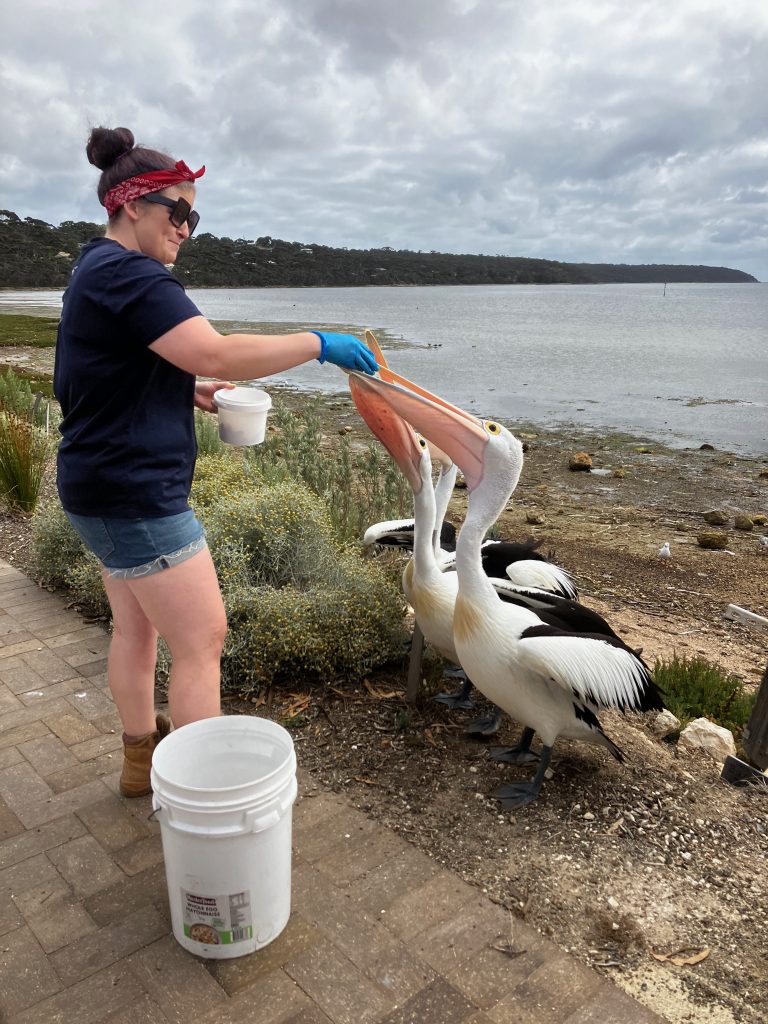
Today’s first stop was just a few metres from my door. I went to the oyster farm.
I didn’t realise, but the bay that my hotel is on is also where they farm the oysters on the island. When I saw how close it was, of course this was the first stop for the day. There are big advantages to being retired. The only people on my tour were a Danish tourist family and me. Everyone else is back at school/work.
The first stop, after meeting at the oyster café, was to walk across the road to the bay and feed the pelicans. We weren’t given the chance to have a go, and I could see why when one of them tried to swallow our guide’s entire hand in his eagerness to snare the oyster.
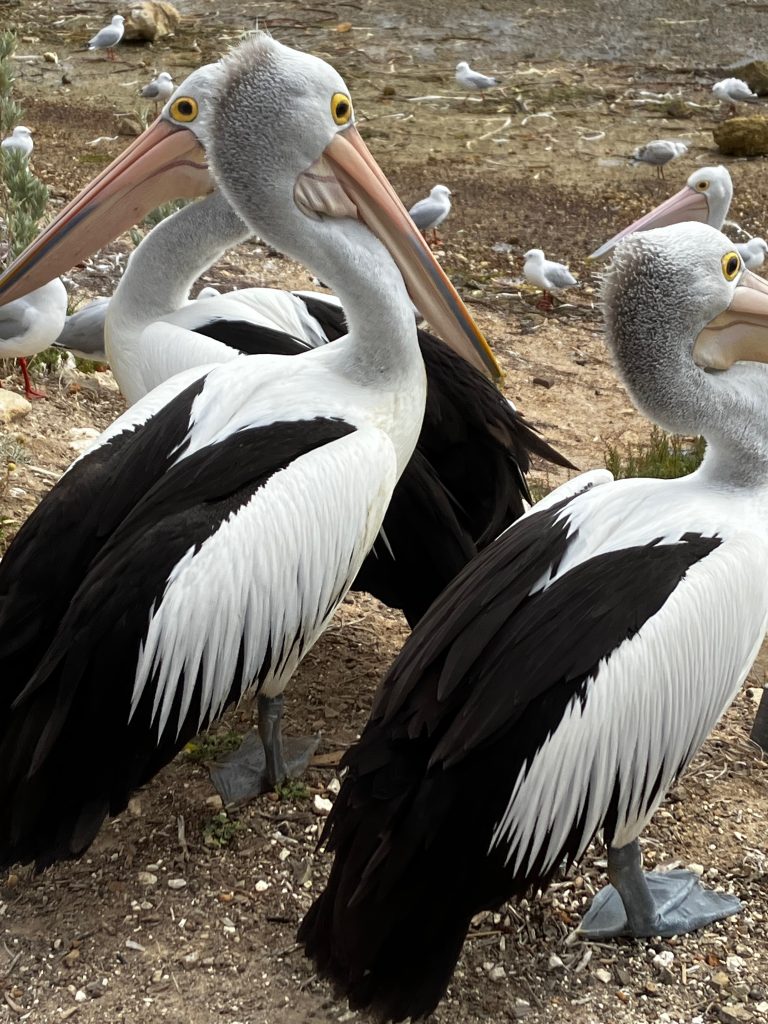
Look at those weird eyes! It doesn’t seem that there’s a lot going on behind them…
While we were here, we were directed to look out to the mouth of the bay. There was a dark line along half of the bay opening. These were the oyster cages.
You can’t get fresher oysters. They bring them in from the bay, sort them in the shed directly on the beach, and then bring them across the road to the café.
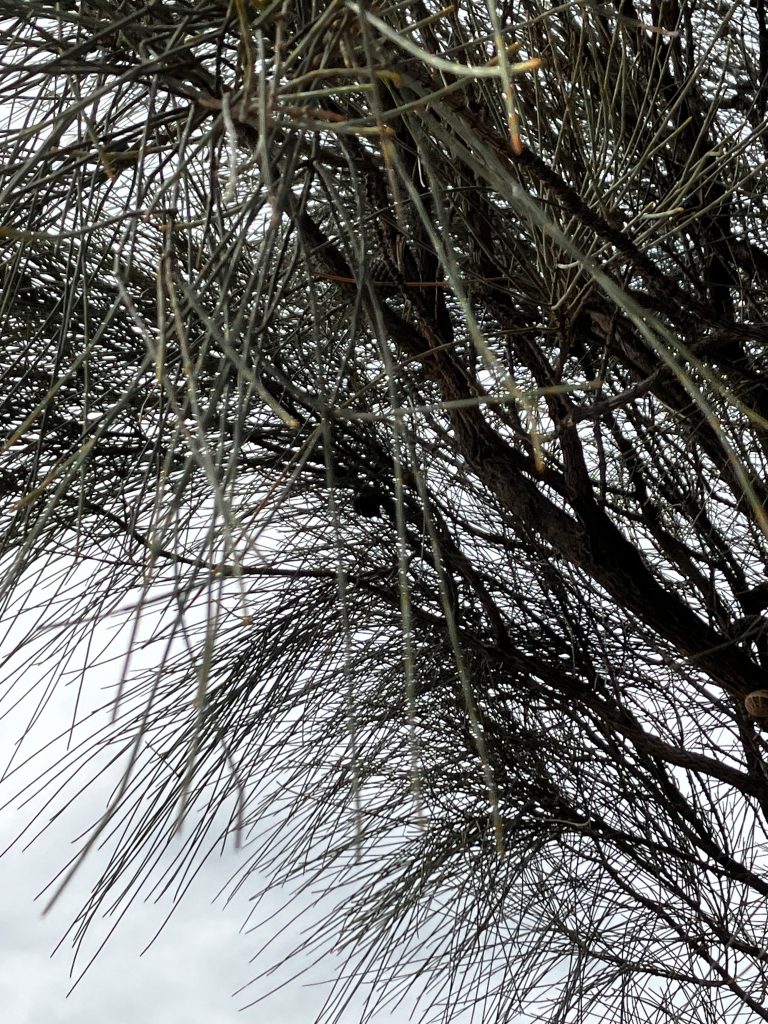
On our way into the shed, we passed these scrappy-looking trees called She-Oaks. The seeds are a staple food for the island’s endangered Glossy Black Cockies, and the oyster farm also uses them to smoke their oysters.

This is an intertidal bag which will be filled with baby oysters. They roll around with the tides. A baby oyster takes around 2.5 years to grow big enough to harvest.
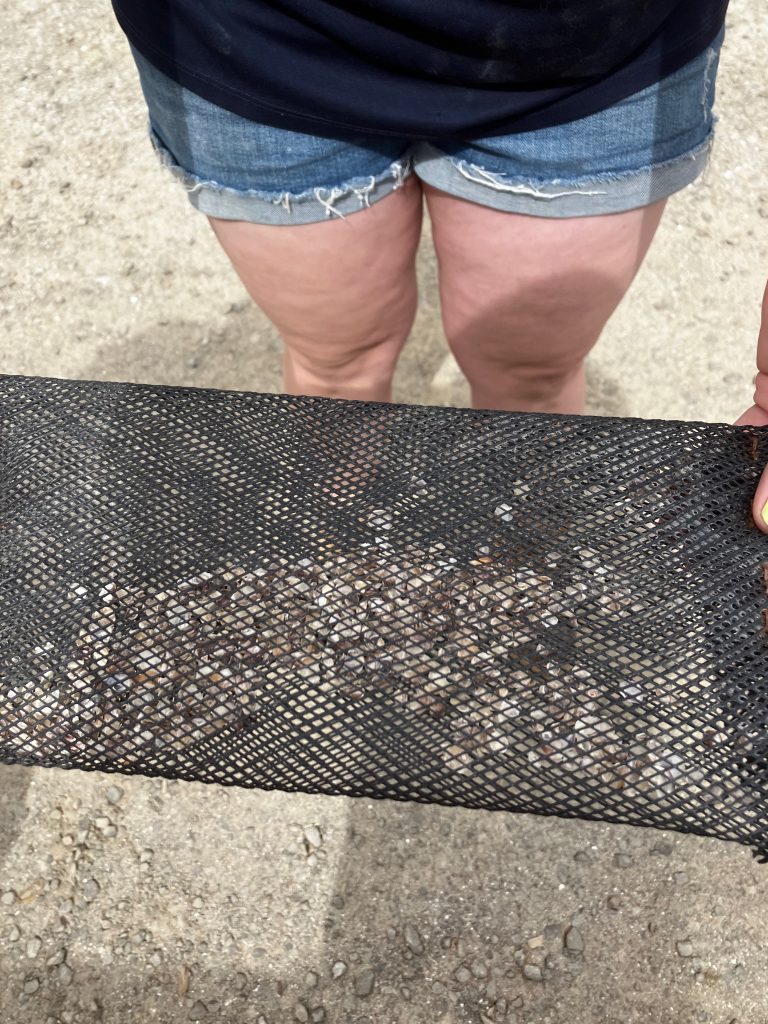
They start off with hundreds of tiny baby oysters in bags like this, with small holes, enough to let the sea water in and keep the oysters from falling through. Around twice a year, the bags are hauled up and the growing oysters are decanted into bigger crates with larger holes. as of course the oysters need ready access to seawater to thrive.
Each time, fewer and fewer oysters are put into each crate to allow them enough room to grow. If they’re too crowded, the poor things grow into each other, which would probably feel horrible.
Interestingly, spawning baby oysters swap genders throughout their lives.
There are two types of cages – the deep sea ones which lie on the sea bed and get very little disturbance, and the intertidal ones that get buffeted by the tides every day.
The deep sea oysters develop thin shells and have to be manually graded.

The intertidal oysters, on the other hand, have developed massive thick shells and so can be graded by machine to save time.
Normal oysters can stay in the fridge for 7 – 10 days.
The indigenous variety – the Angasi – only lasts 3 – 5 days. The fridges are run at warmer temperatures than we’re used to, at around 9C. This is because the oysters are still alive and if the temperature is too low they’ll die.
Any that aren’t sold by the end of this time are put back into the sea again.
The Angasi oysters used to be plentiful along the coastal regions of Australia, but of course the white settlers nearly foraged them out of existence. They’re slowly making a comeback, but they’re more delicate than the usual oysters farmed here.
After this, we walked back across the road to the café, where we had a tasting.
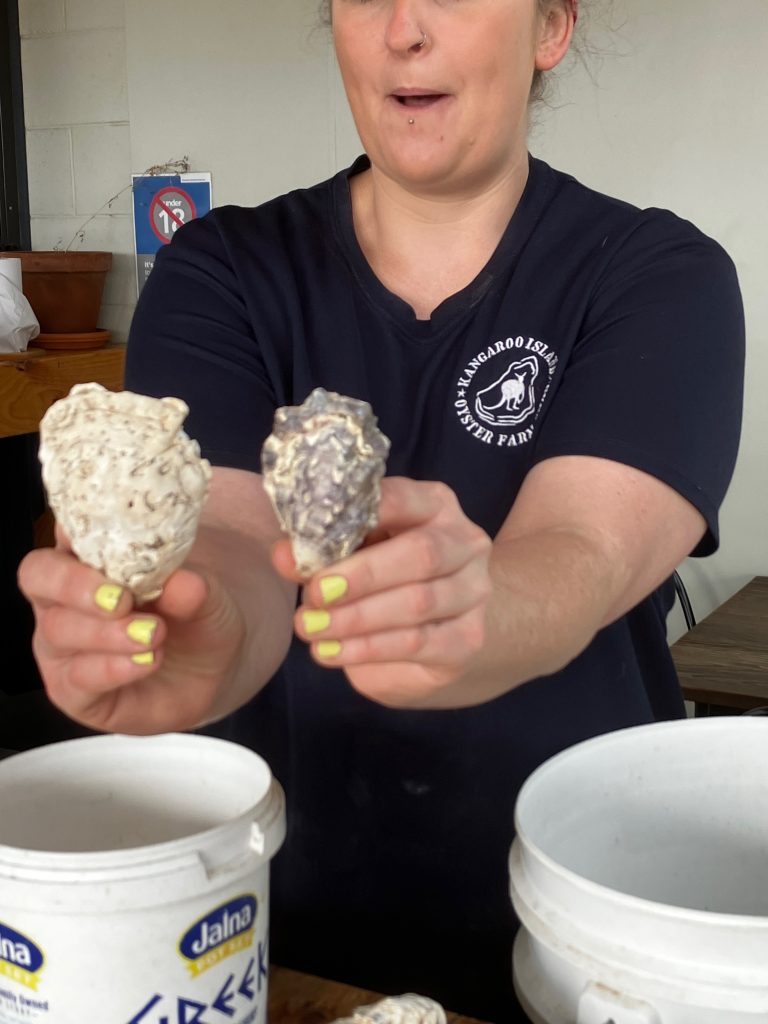
The shell on the right is an Angasi shell. It’s a milder taste than the oysters we usually have.
She shucked those oysters right in front of us and we dived in.
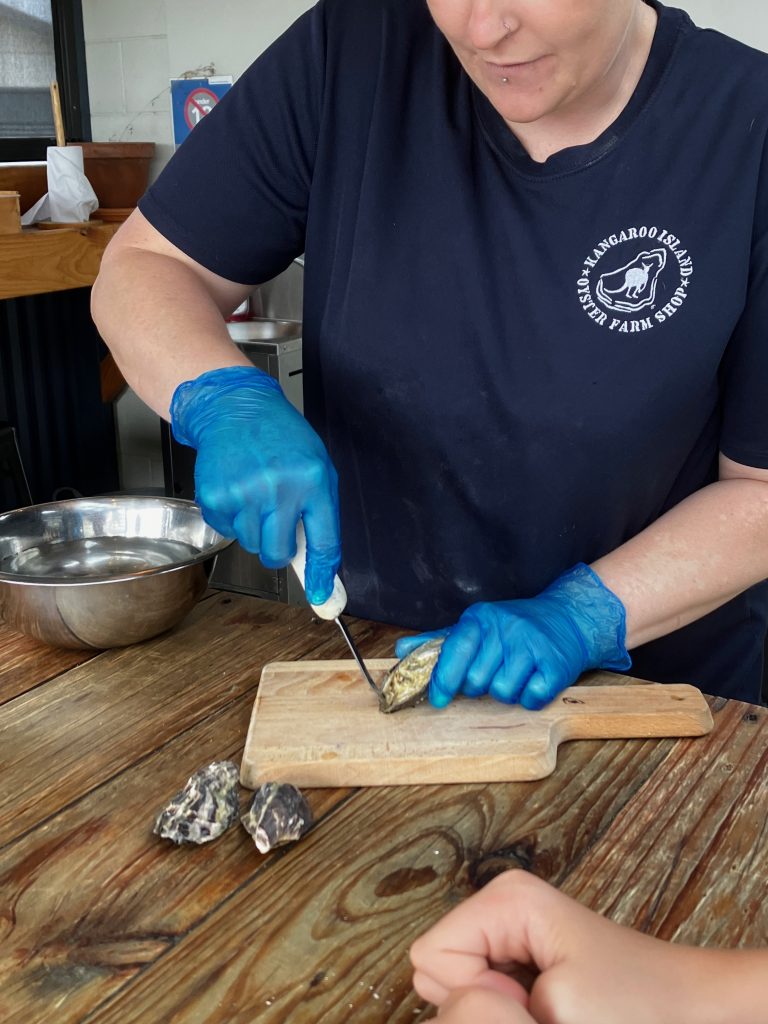
Seriously, the best oysters I’ve ever had.
It was almost lunchtime and I saw that the café had marron on the menu. When I was in Adelaide, Jenna’s uncles told me to be sure to try the Kangaroo Island marron. It’s between the size of a crayfish and a yabby and it’s freshwater.
I decided to try one for lunch.
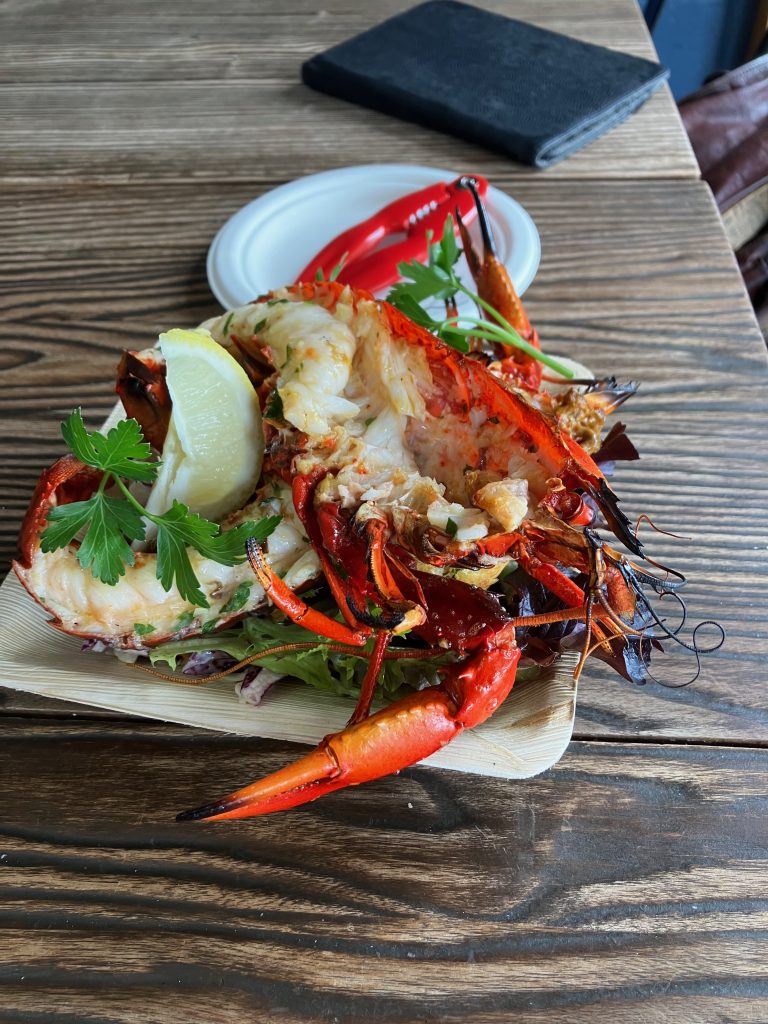
So good. It was served on a bed of coleslaw, with a slice of garlic bread. The marron was the perfect size for lunch. I enjoyed every bite.
Then I had to decide where to go. The girl behind the counter recommended Clifford’s Honey Farm. There was a different honey farm that allowed you to get all suited up and harvest honey from the bee hives and I definitely would’ve been up for this, but unfortunately they weren’t open on Tuesdays and Wednesdays, which were all the days I had left.
So Cliffords it was!

This was where I discovered that Kangaroo Island has many, many roads that are completely unmade. You certainly don’t want to be precious about your clean car when coming here! After a sometimes jaw-rattling ride in my trusty Golf, I arrived at the farm.
Apparently, their claim to fame is their Honey ice cream. I decided that dessert for a lunch on holiday is almost obligatory, so I grabbed a sample. It was ok, but seeing as I’m a person who doesn’t like milk or cream, it was a bit too creamy for me. I’m guessing most other people would love it.

They had three different types of honey to try and surprise, surprise! They had all three in a pack to buy.
Which I did.
I don’t use a whole heap of honey in my kitchen but hey. It’s never going to go off, is it? I also bought a bottle of Honey Mead. I have no idea what it tastes like but I figured thousands of Vikings can’t be wrong.
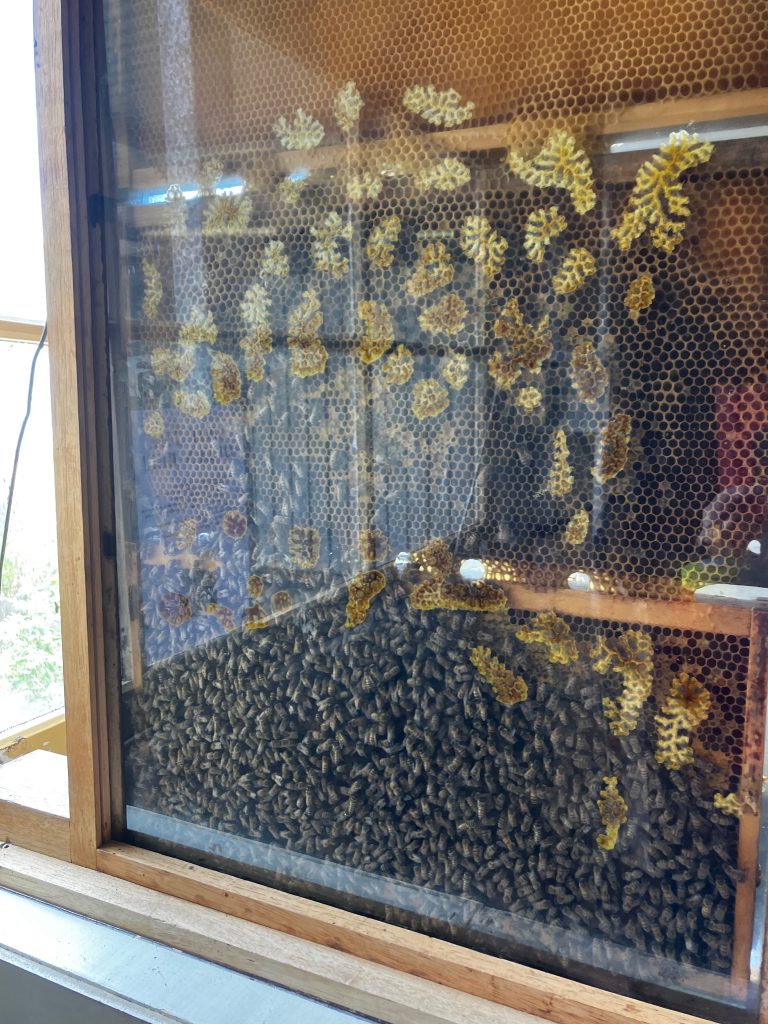
At the back of the shop they had a working hive, with the queen bee marked with a white dot. I looked for ages but couldn’t find her. The hive was open to the outside and it was interesting to see all the bees flying back into the hive.
The following paragraphs are from the Clifford’s Honey Farm leaflet.
Before the 1880’s there were no honeybees on Kangaroo Island. When importations were made between 1881 – 1885, the intention was for them to breed up and provide a future source of purebred queen bees for the beekeeping industry. These bees originated from Italy in the province of Liguria, and are known as Ligurian bees.
In 1885 the South Australian government proclaimed Kangaroo Island to be a bee sanctuary for these bees and no more importations have been made. So today we are believed to have the purest strain of these bees left in the world. The island is out of range of bee flight from the mainland.
There are big signs at the ferry terminus telling people that they can’t bring any honey products onto the island. This is obviously to protect this pure strain of bees.
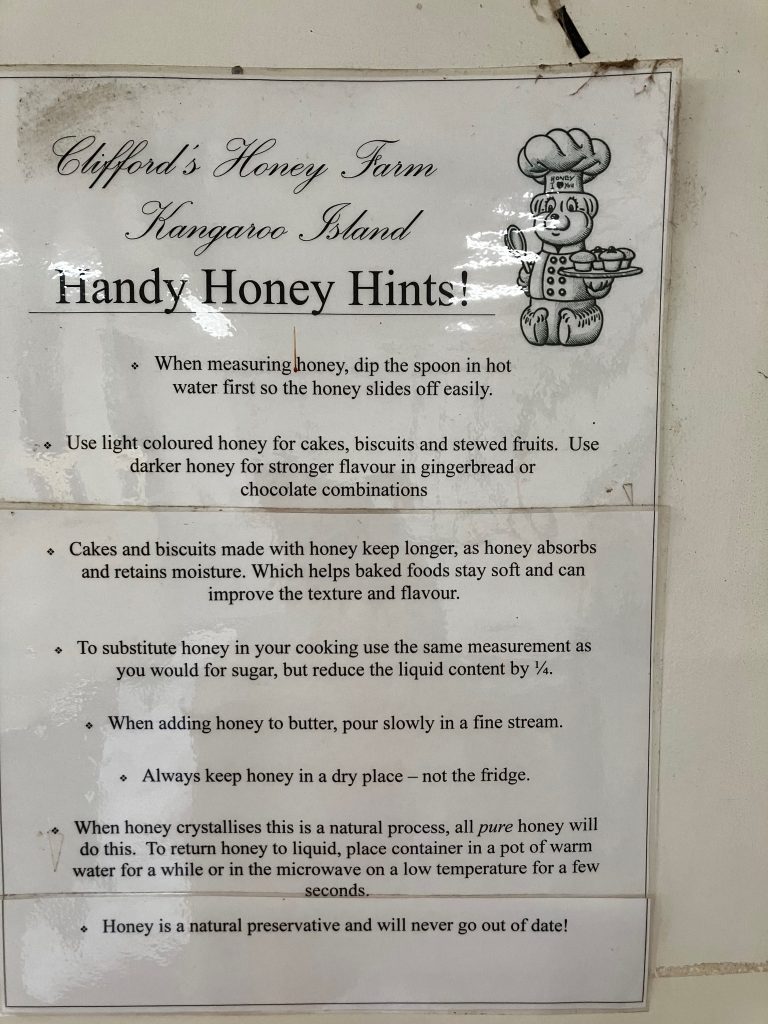
Here are some handy hints and tips for you. Never say I don’t give you anything.
Fortified by the honey icecream, I decided to take a look at something that I read about on the ferry coming into Kangaroo Island: The Sculpture Walk.
More on this tomorrow…
Dad joke of the day:

The Dad joke hit home here in America. Sad but true. Thanks for the Adventures, I am living vicariously through you until I can hit the road myself.
You’ll have so much fun when you do!
Love the post! And if you think the pelicans’ eyes are crazy, their underbelly is even weirder! One landed in front of me while snorkeling in the Galapagos. I heard the guys in the zodiac roaring with laughter while I’m thinking what the heck is in front of me? Imagine my surprise when I lifted my head!
Haha! Travel storied like this are the best. I’d like to go to the Galapagos one day.